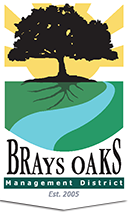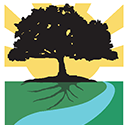 If you’re into the natural habitat and the sights and sounds in our area, including the many diverse bird sounds, naturalist Mary Ann Beauchemin leads the perfect activity for you.
If you’re into the natural habitat and the sights and sounds in our area, including the many diverse bird sounds, naturalist Mary Ann Beauchemin leads the perfect activity for you.
She leads the Nature Trail Bird Walks in the Brays Oaks District multiple times a year. Several neighborhood people joined the October bird walk ready with cameras, binoculars, and drinking water, some with note pads or reference materials.
The walk is not only for watching and listening for birds. Participants are treated to an educational program about the variety of birds, their natural habitats here and their diets. Their names are identified, as well as their calls and sounds. Lots of photos are taken. Some of the bird species are less commonly known but they thrive right in our urban backyards.
“It becomes addictive as a hobby,” Beauchemin said. “Watching birds is a window into nature as they invite you in, and you also get to be outside enjoying nature. Bird walking is one of my personal passions.”
The Brays Bayou group will meet next on two Saturdays in early 2023, with the dates pending. The walk starts at 9022 Willow Meadow Drive along a concrete trail to a hike and bike trail bridge over Keegans Bayou.
Group members learn how birds are an important part of our ecosystem and how they help our environment. They also learn to identify various types of trees, shrubs, grass and prairies. It is a complete ecology lesson in one hour.
 Resident Sharon Young, an enthusiastic naturalist, attended the inaugural Brays Oaks bird walk. She is a follower of “inaturalist.org” app and website that help identify species of wildlife.
Resident Sharon Young, an enthusiastic naturalist, attended the inaugural Brays Oaks bird walk. She is a follower of “inaturalist.org” app and website that help identify species of wildlife.
“I view birding with a wide lens,” Young said. “My main interest is their habitat. Has it been disrupted? The bayous associated with Brays Oaks Trail and Keegans Bayou Trail are appealing to me because they attract water birds as well as fish, turtles, butterflies.
“I see fathers holding their infant on the railings to tell them about the wildlife. Families walk by with kids lingering with curiosity as I inform them of the wildlife from the bridge.”
Beauchemin is a retired 30-year nature educator who worked at the Bellaire Nature Discovery Center into 2020. She has a master’s degree in environmental education and she taught in Austin — until Houston was lucky enough to see her arrive here.
At the Nature Discovery Center, she led bird walks as well as worked as its first nature educator.
 She leads many other bird walks and a monthly “bird survey” at the Willow Waterhole Greenspace, overseen by the Houston Audubon Society. The survey is important for documenting how species counts change over time.
She leads many other bird walks and a monthly “bird survey” at the Willow Waterhole Greenspace, overseen by the Houston Audubon Society. The survey is important for documenting how species counts change over time.
“Bird diversity has increased with the planting of many trees and shrubs, for those birds that are dependent on trees, native wildflowers and insects for food,” Beauchemin said. “The ponds have so many water birds, including snowy egrets, great egrets, roseate spoonbills, green herons, blue herons and little herons, who wade in the water to eat.”
People involved in the bird survey count the numbers and types of birds. The data is collected at eBird.org, run by Cornell University.
The rarest bird found at Willow Waterhole is the Loggerhead Shrike, which likes a more open area. As the greenspace fills in with more greenery, they are moving out, while the water and wading birds are increasing.
For information on the next Brays Oaks bird walk, watch for postings on this Brays Oaks Management District website and Facebook page.
– By Arlene Nisson Lassin
Photo of Beauchemin by Bellaire Nature Discovery Center








